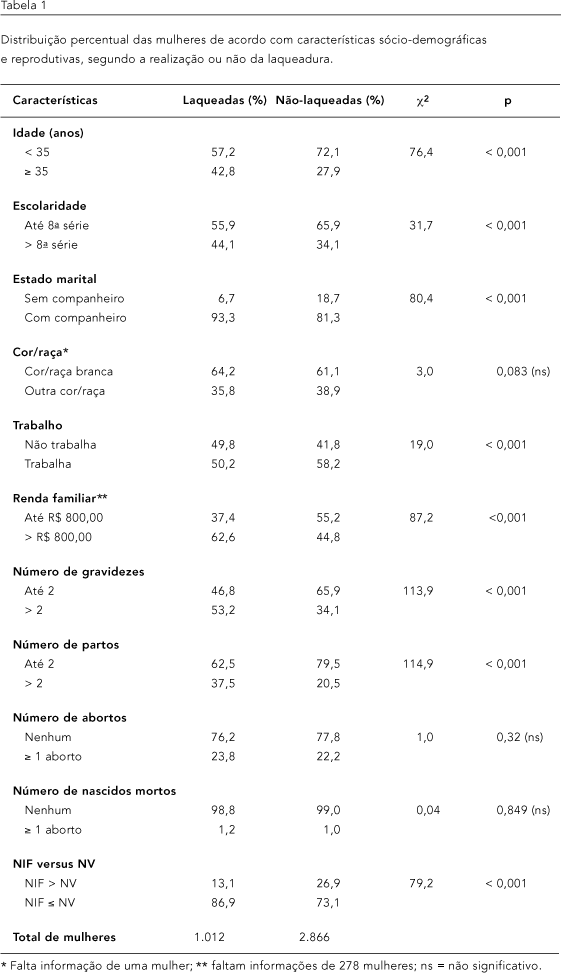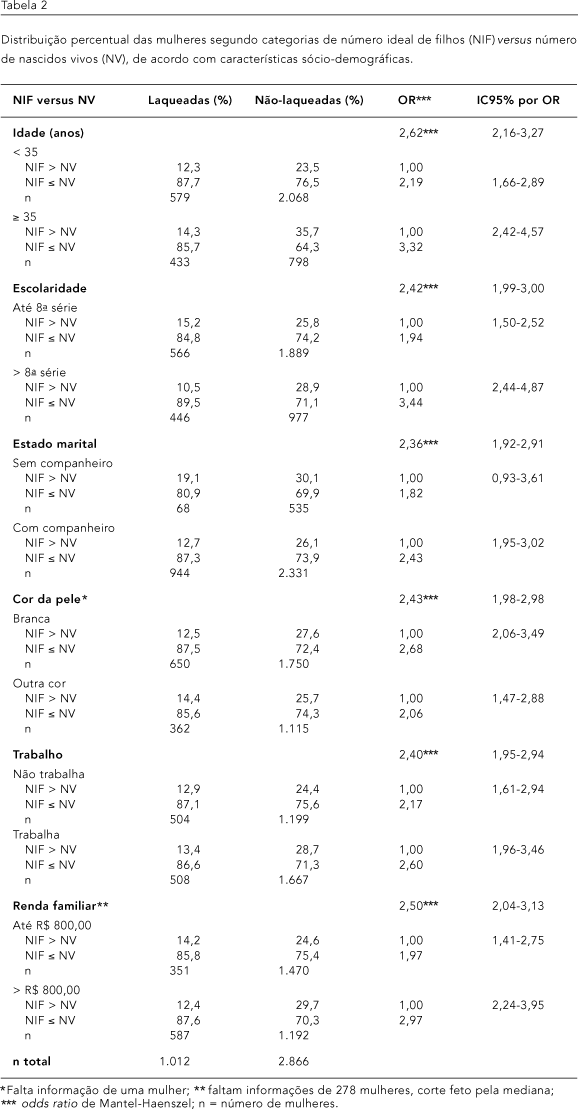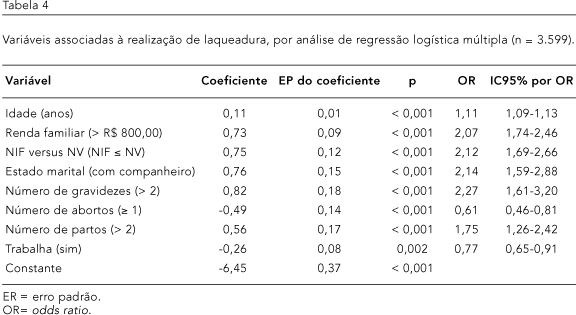The purpose of this paper was to evaluate the association between ideal number of children (INC) and female sterilization. A nested case-control study was performed through a secondary analysis of data from a cohort study on the reproductive health of women in Campinas, São Paulo, Brazil. A total of 3,878 women were included, 1,012 being sterilized (cases). The relationship between INC and number of live births (LB) was divided in two categories (INC > LB and INC ¾ LB). The relative risks of performing tubal ligation were calculated (odds ratio) with their respective 95% confidence intervals for the relation INC/LB and all control variables. All predictor variables were included in a logistic regression model in order to identify the factors independently associated with female sterilization. The results showed that the risks of tubal ligation were higher among women with INC < LB, higher age, with partners, higher family income, more than two previous pregnancies, more deliveries, fewer abortions, and without paid work.
Contraception; Tubal Ligation; Family Planning; Birth Control




